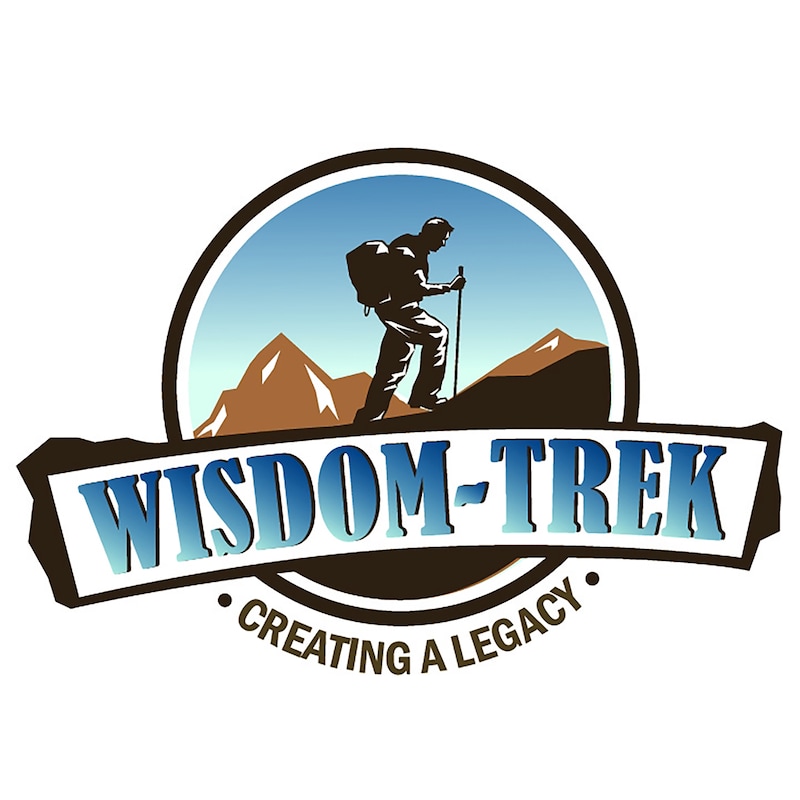
Shownotes
Welcome to Day 1478 of our Wisdom-Trek, and thank you for joining me.
This is Guthrie Chamberlain, Your Guide to Wisdom
Faster Transportation – Ask Gramps
Wisdom - the final frontier to true knowledge. Welcome to Wisdom-Trek! Where our mission is to create a legacy of wisdom, to seek out discernment and insights, to boldly grow where few have chosen to grow before. Hello, my friend, I am Guthrie Chamberlain, your captain on our journey to increase Wisdom and Create a Living Legacy. Thank you for joining us today as we explore wisdom on our 2nd millennium of podcasts. Today is Day 1478 of our Trek, and our focus on Fridays is the future technological and societal advances, so we call it Futuristic Fridays. My personality is one that has always been very future-oriented. Since my childhood, I have yearned for the exploration and discovery of new technologies and advancements for the future. I grew up with the original Star Trek series, and even today, as I am now on my 65th revolution around the sun, I still dream of traveling in space. Each week we will explore rapidly converging technologies and advancements, which will radically change our lives. At times, the topics may sound like something out of a science fiction novel, but each area that we explore is already well on its way of becoming a reality over the next couple of decades.
To keep with our theme of “Ask Gramps,” I will put our weekly topics in the form of a question to get us on track. This week’s question is, Hey Gramps, In addition to autonomous and flying vehicles, what are some other modes of transportation that will be part of our future?
Faster Transporation
Last week we learned how AI, Robots, and Drones could assist during natural or human-made disasters. This week our focus will be on super-fast transportation. I am using some of the information mentioned in Peter Diamandis’s blogs and book “The Future is Faster Than You Think.”
What’s faster than autonomous vehicles and flying cars?
Try Hyperloop, rocket travel, and robotic avatars.
Hyperloop is currently working towards 670 mph (1080 kph)passenger pods, capable of zipping us from Los Angeles to downtown Las Vegas in under 30 minutes.
Low Orbit Rocket Travel (think SpaceX’s Starship) promises to deliver you almost anywhere on the planet in under an hour. Think New York to Shanghai in 39 minutes.
But wait, it gets even better…
As 5G connectivity, hyper-realistic VR, and next-gen robotics continue their exponential progress, the emergence of “Robotic Avatars” will all but nullify the concept of distance, replacing human travel with immediate remote telepresence.
Let’s dive in.
Hyperloop One: Los Angeles to San Francisco in 35 Minutes
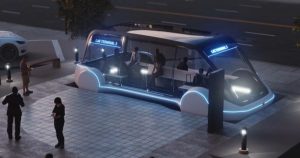
Did you know that Hyperloop was the brainchild of Elon Musk? It is just one in a series of transportation innovations from a man determined to leave his mark on the industry.
In 2013, in an attempt to shorten the long commute between Los Angeles and San Francisco, the California state legislature proposed a $68 billion budget allocation for what appeared to be the slowest and most expensive bullet train in history.
Musk was outraged. The cost was too high, the train too sluggish. Teaming up with a group of engineers from Tesla and SpaceX, he published a 58-page concept paper for “The Hyperloop,” a high-speed transportation network that used magnetic levitation to propel passenger pods down vacuum tubes at speeds of up to 670 mph.
If successful, it would zip you across California in 35 minutes—just enough time to watch your favorite sitcom. In January 2013, venture capitalist Shervin Pishevar, with Musk’s blessing, started Hyperloop One with Peter Diamandis, Jim Messina (former White House Deputy Chief of Staff for President Obama), and tech entrepreneurs Joe Lonsdale and David Sacks, as founding board members.
A couple of years after that, the Virgin Group invested in this idea, Richard Branson was elected chairman, and Virgin Hyperloop One was born.
Josh Giegel, co-founder and chief technology officer of Hyperloop One, says, “The Hyperloop exists, because of the rapid acceleration of power electronics, computational modeling, material sciences, and 3D printing.”
Thanks to these convergences, there are now ten major Hyperloop One projects—in various stages of development—spread across the globe. Chicago to DC in 35 minutes. Pune to Mumbai in 25 minutes.
According to Giegel: “Hyperloop is targeting certification in 2023. By 2025, the company plans to have multiple projects under construction and running initial passenger testing.”
So think about this timetable: Autonomous car rollouts by 2020: hyperloop certification and aerial ride-sharing by 2023. By 2025— going on vacation might have a totally different meaning. Going to work most definitely will.
On September 15th, just three days ago, Elon Musk announced that the Loop Tunnel under Las Vegas is nearly complete. This experimental, novel tunnel will carry 16 passengers maximum, up to 155 MPH along its underground tunnels. This prototype is just the beginning.
But what’s faster than Hyperloop?
Rocket Travel
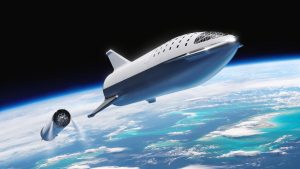 As if autonomous vehicles, flying cars, and Hyperloop weren’t enough, a couple of years ago, while speaking at the International Astronautical Congress in Adelaide, Australia, Musk promised that for the price of an economy airline ticket, his rockets will fly you “anywhere on Earth in under an hour.”
As if autonomous vehicles, flying cars, and Hyperloop weren’t enough, a couple of years ago, while speaking at the International Astronautical Congress in Adelaide, Australia, Musk promised that for the price of an economy airline ticket, his rockets will fly you “anywhere on Earth in under an hour.”
Musk wants to use SpaceX’s mega-rocket, Starship, which was designed to take humans to Mars, for terrestrial passenger delivery. The Starship travels at 17,500 mph. It’s an order of magnitude faster than the supersonic jet Concorde.
Think about what this actually means: New York to Shanghai in thirty-nine minutes. London to Dubai in twenty-nine minutes. Hong Kong to Singapore in twenty-two minutes.
So how real is the Starship?
“We could probably demonstrate this [technology] before the end of this decade,” Musk explained, “but it’s going to take a while to get the safety right. It’s a high bar. Aviation is incredibly safe. You’re safer on an airplane than you are at home.”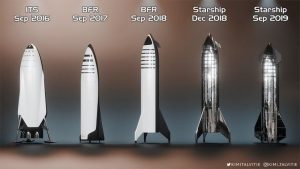 That demonstration is proceeding as planned. Musk announced his intentions to retire his current rocket fleet, both the Falcon 9 and Falcon Heavy, and replace them with the Starships in the 2020s.
That demonstration is proceeding as planned. Musk announced his intentions to retire his current rocket fleet, both the Falcon 9 and Falcon Heavy, and replace them with the Starships in the 2020s.
LA mayor Eric Garcetti tweeted that SpaceX was planning to break ground on an eighteen-acre rocket production facility near the Port of Los Angeles. April of last year marked an even more significant milestone: the very first test flights of the Starship rocket. The fact is, sometime in the next decade or so, “off to Europe for lunch” may become a standard part of our lexicon.
Avatars
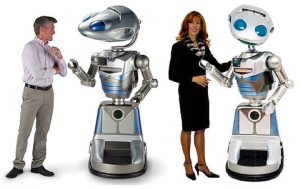
Wait, wait, there’s one more thing.
While Technologies such as self-driving and flying cars and Hyperloop and low orbit rockets will radically change the traditional transportation industry, there’s something on the horizon that will disrupt travel itself.
What if, to get from A to B, you didn’t have to move your body? What if you could quote Captain Kirk and just say: “Beam me up, Scotty.” Well, shy of the Star Trek transporter, there’s the world of avatars.
An avatar is a second self, typically in one of two forms. The digital version has been around for a couple of decades. It emerged from the video game industry and was popularized by virtual world sites like Second Life and books-turned-blockbusters like Ready Player One.
A VR headset teleports your eyes and ears to another location, while a set of haptic sensors shifts your sense of touch. Suddenly, you’re inside an avatar inside a virtual world. As you move in the real world, your avatar moves in the virtual.
Use this technology to give a lecture, and you can do it from the comfort of your living room, skipping the trip to the airport, the cross-country flight, and the ride to the conference center. The Covid-19 pandemic will accelerate this by several years.
Robots are the second form of avatars. Imagine a humanoid robot that you can occupy at will. Maybe, in a city far from home, you’ve rented the bot by the minute—via a different kind of ride-sharing company—or perhaps you have spare robot avatars located around the country.
Either way, put on VR goggles and a haptic suit, and you can teleport your senses into that robot. This allows you to walk around, shake hands, and take action without leaving your home. Like the rest of the tech we’ve been talking about, even this future isn’t far away.
In 2018, entrepreneur Dr. Harry Kloor recommended to All Nippon Airways (ANA), Japan’s largest airline, the design of an Avatar XPRIZE. ANA then funded this vision to the tune of $10 million to speed the development of robotic avatars. Why? Because ANA knows this is one of the technologies likely to disrupt their own airline industry, and they want to be ready.
ANA recently announced its “newme” robot that humans can use to explore new places virtually. The colorful robots have Roomba-like wheeled bases and cameras mounted around eye-level, which capture surroundings viewable through VR headsets.
If the robot was stationed in your parents’ home, you could cruise around the rooms and chat with your family at any time of day. After revealing the technology at Tokyo’s Combined Exhibition of Advanced Technologies in October, ANA plans to deploy 1,000 newme’s by 2021. With virtual avatars like “newme,” geography, distance, and cost will no longer limit our travel choices.
From attractions like the Eiffel Tower, or the pyramids of Egypt, to unreachable destinations like the Moon or deep sea, we will be able to transcend our own physical limits, explore the world and outer space, and access nearly any experience imaginable.
Final Thoughts About Transportation
Individual car ownership has enjoyed over a century of ascendency and dominance. The first real threat it faced—today’s ride-sharing model—only showed up in the last decade. But that ride-sharing model won’t even get ten years to dominate.
Already, it’s on the brink of autonomous car displacement, which is on the brink of flying car disruption, which is on the brink of Hyperloop and rockets-to-anywhere decimation. Then there is the morphing of avatars. The most important part: All of this change will happen over the next ten to fifteen years.
Welcome to a future of human presence where the only constant is rapid change.
Imagine how all of this technology will also allow us to rapidly spread the Good News of Jesus Christ and facilitate the building of God’s Kingdom on earth, as it is in heaven. As more people all over the world become hyper-connected, there will be no limit to our reach. I have to admit, I do get excited when I dream of the potential that emerging technology will provide to us in the next few decades.
And then he told them, “Go into all the world and preach the Good News to everyone.
That is a wrap for today’s question. Join us again next Futuristic Friday as we look at another exciting exponential technology area on our ‘Ask Gramps’ episode. Our next trek is Meditation Monday, where we will help you reflect on what is most important in life. So encourage your friends and family to join us and then come along on Monday for another day of ‘Wisdom-Trek, Creating a Legacy.’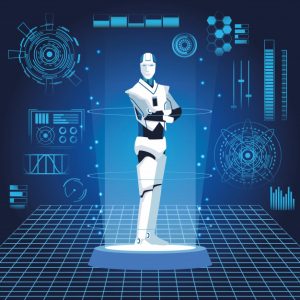 If you would like to listen to any of the past 1477 daily treks or read the associated journals, they are available at Wisdom-Trek.com. I encourage you to subscribe to Wisdom-Trek on your favorite podcast player so that each day will be downloaded to you automatically.
If you would like to listen to any of the past 1477 daily treks or read the associated journals, they are available at Wisdom-Trek.com. I encourage you to subscribe to Wisdom-Trek on your favorite podcast player so that each day will be downloaded to you automatically.
Thank you for allowing me to be your guide, mentor, but most importantly, I am your friend as I serve you in through this Wisdom-Trek podcast and journal.
As we take this Trek of life together, let us always:
- Live Abundantly (Fully)
- Love Unconditionally
- Listen Intentionally
- Learn Continuously
- Lend to others Generously
- Lead with Integrity
- Leave a Living Legacy Each Day
I am Guthrie Chamberlain….reminding you to ’Keep Moving Forward,’ ‘Enjoy your Journey,’ and ‘Create a Great Day…Everyday’! See you on Monday!